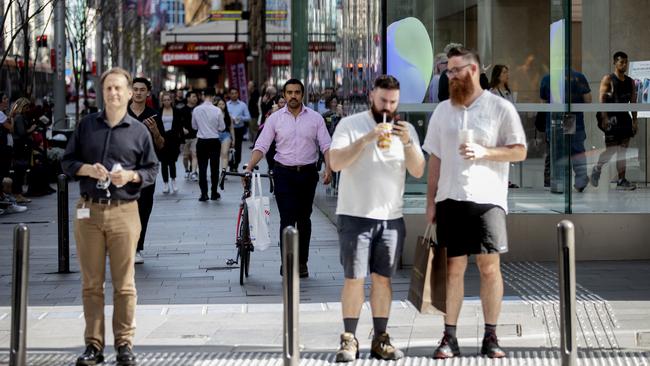September labour force data: Unemployment holds at 4.1 per cent in bad news for rates
The Australian economy has added tens of thousands of new jobs, reducing the likelihood of a rate cut in the coming months.
Economy
Don't miss out on the headlines from Economy. Followed categories will be added to My News.
The unemployment rate held steady at 4.1 per cent in September, in line with the revised figure for August, according to seasonally adjusted data released by the Australian Bureau of Statistics (ABS).
This is bad news for mortgage holders looking for a stronger signal that the Reserve Bank of Australia could finally cut the official cash rate later this year.
Oxford Economics Australia head of macroeconomic forecasting Sean Langcake said Thursday’s job figure would likely push the time out for Australia’s first rate cut since Covid.
“These data are not strong enough to provoke a rate hike from the RBA. But, we do think they support our view that a rate cut is further away than the market currently thinks,”
Mr Langcake said.
“We still see the first RBA rate cut coming in Q2 2025.”
The RBA has two more board meetings this year – Melbourne Cup day and December – before its first meeting in February next year.
The economy added 64,100 jobs last month, the ABS reported on Thursday, significantly more than the 25,000 economists expected. The unemployment rate held at 4.1 per cent, below analysts’ estimates.
Despite the slight fall in the number of unemployed people, the strong rise in employment saw the participation rate rise by 0.1 percentage point to a record high of 67.2 per cent.
Jobs growth remained remarkably strong over the past year, defying a marked slowdown in economic growth.

According to Mr Langcake “labour demand is being met with additional supply, evidenced by the participation rate and employment-to-population ratios breaking through to record highs in recent months.”
The ABS figures show employment has risen by 3.1 per cent in the past year, growing faster than the civilian population growth of 2.5 per cent.
“This has contributed to the increase in the employment-to-population ratio by 0.1 percentage point, and 0.4 percentage points over the past year, to a new historical high of 64.4 per cent,” Bjorn Jarvis, ABS head of labour statistics said.
“The record employment-to-population ratio and participation rate shows that there are still large numbers of people entering the labour force and finding work in a range of industries, as job vacancies continue to remain above pre-pandemic levels.

While the number of unemployed people fell slightly to 616,000 in September, over the past 12 months there are signs of weakness.
The ABS said there were 90,000 more unemployed people this year compared with September 2023.
“Even with the rise over the last year, there are still around 93,000 fewer unemployed people than there were just before the start of the Covid-19 pandemic, when the unemployment rate was at 5.2 per cent,” Mr Jarvis said.
The results were better than expected, with Treasurer Jim Chalmers saying the Albanse government is the only government to create one million jobs in a single parliamentary term.
“More than a million new jobs in one parliamentary term is a pretty remarkable achievement in a slowing economy, and it means more new jobs have been created on our watch than any other government at any time,” he said.
Opposition employment spokeswoman Michaelia Cash said the jobs were being created in the bureacracies, not the private sector.
“In the two and a half years under this government, you have an increase in the rate of jobs growth in the public sector. That’s just the government increasing the size of the bureaucracy,” Senator Cash said.
“What you want to see is a strong and healthy private sector. The exact opposite under this government. You now have business insolvencies at an all-time high.”
Originally published as September labour force data: Unemployment holds at 4.1 per cent in bad news for rates




